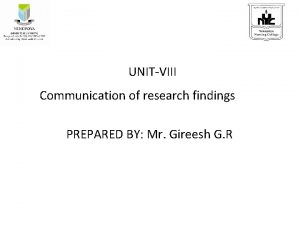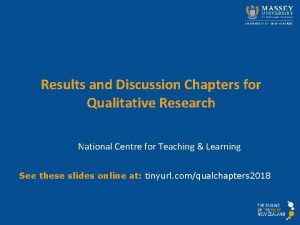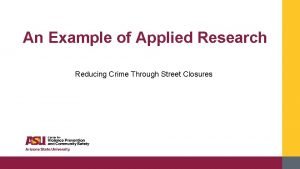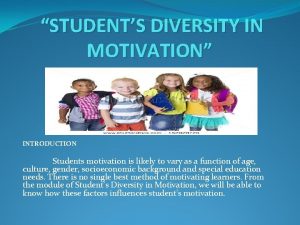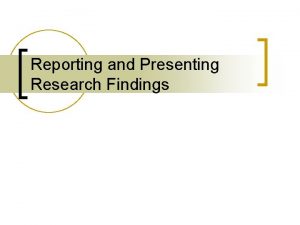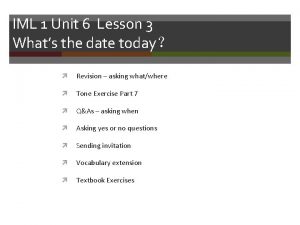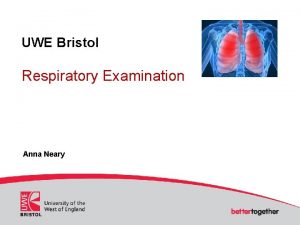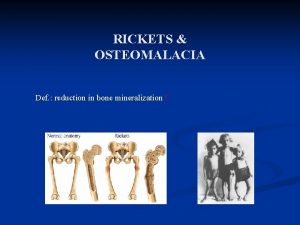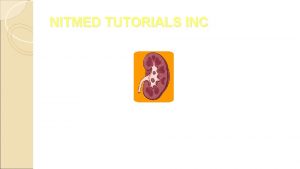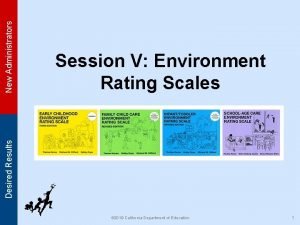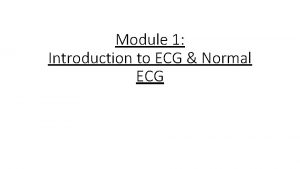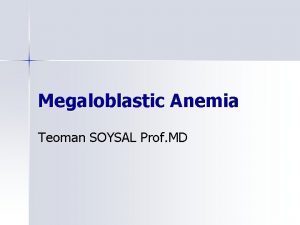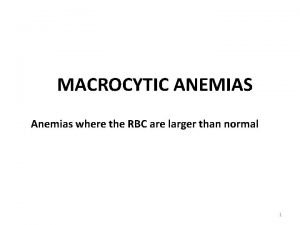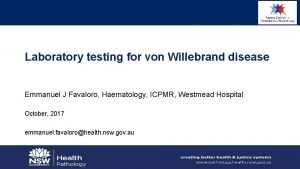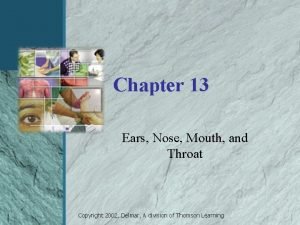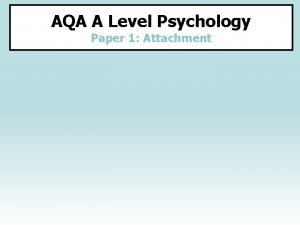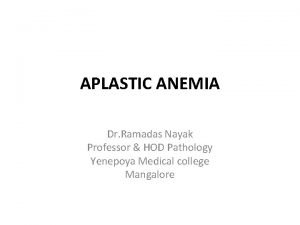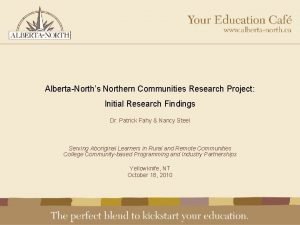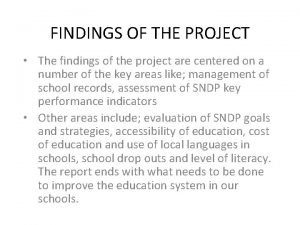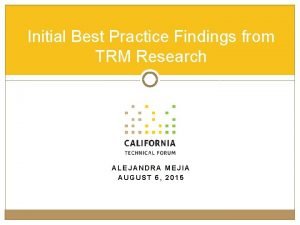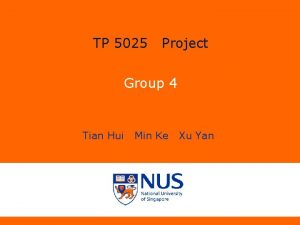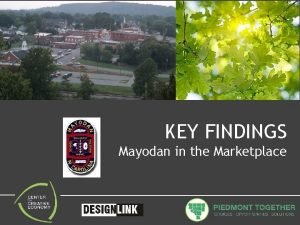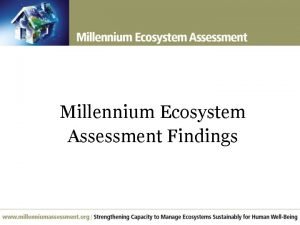Initial Findings from Research on the TIAN Project



































- Slides: 35

Initial Findings from Research on the TIAN Project A New Professional Learning Model for Adult Education Math Teachers Mary Jane Schmitt TERC, Cambridge, MA Beth Bingman & Center for Literacy Studies, Donna Curry University of Tennessee contact: mary_jane_schmitt@terc. edu ALM 15/July 2008/Schmitt 1

• Project overview • The PD component • The research component methodology early findings • Discussion ALM 15/July 2008/Schmitt 2

Project Overview • 4 -year collaboration (2005 -2009) – Center for Literacy Studies, University of Tennessee – TERC, Cambridge, MA • Funded by the National Science Foundation (NSF) under the Teacher Professional Continuum initiative • Final Product: A sustainable staff development model for adult math and numeracy teachers, available nationally ALM 15/July 2008/Schmitt 3

Assumptions • Math is more than procedures • Quality PD has some essential features ALM 15/July 2008/Schmitt 4

Math is more than procedures • Conceptual Understanding • Adaptive Reasoning • Strategic Competence • Procedural Fluency • Productive Disposition Source: “Adding It Up: Helping Children Learn Mathematics”, http: //newton. nap. edu/catalog/9822. html ALM 15/July 2008/Schmitt 5

Quality PD has some essential features • occurs over time • helps instructors advance their own conceptual understanding of mathematics and the way adults learn • helps instructors connect content and materials to authentic, real-world numeracy/mathematics situation Source: “An Environmental Scan Of Adult Numeracy Professional Development Initiatives And Practices, ” American ALM 15/July 2008/Schmitt Institutes For Research® 6

Quality PD has some essential features • reflects the research on how adults learn • reflects national (e. g. , NCTM, AMATYC, EFF) or state standards • accommodates dissimilar mathematical backgrounds of participants Source: “An Environmental Scan Of Adult Numeracy Professional Development Initiatives And Practices, ” ALM 15/July 2008/Schmitt American Institutes For Research® 7

Our Overarching Question What does it take to help the adult education workforce move closer in belief and practice to mathematics instruction that addresses fluency with procedures, conceptual understanding, strategic competence, adaptive reasoning, and a productive disposition? ALM 15/July 2008/Schmitt 8

Project goals focused on impact regarding • Teachers’ content knowledge • Teachers’ classroom practice • Teachers’ connection with state standards • State’s capacity to support high quality mathematics instruction (leadership development) ALM 15/July 2008/Schmitt 9

Effective Processes for Teacher Change • Teachers do mathematics themselves, with an emphasis on learning with understanding • Close examination and discussion of student work ALM 15/July 2008/Schmitt 10

The PD model ALM 15/July 2008/Schmitt 11

TIAN Pilot to Final ALM 15/July 2008/Schmitt 12

Six teacher cohorts • Pilot (2005 >) • MA & OH • n = 40 • Field Test (2006 >) • AZ, KS, LA & RI • n = 80 ALM 15/July 2008/Schmitt 13

Pilot cohort • 3/4 teach in open-entry, open exit programs • work for school districts, city, community college, community based organizations • Their students spend 3. 6 hrs/week on average “doing math” • 90% teach other subjects as well • small math class size (4 -18, mean = 9) ALM 15/July 2008/Schmitt 14

The First Intensive Year’s Objectives • Increase your own understanding of data and algebra-related math content • Experience, reflect upon, and plan lessons for your students (Using EMPower materials) • Read and critically respond to relevant mathematics research • Connect assessment and instruction with state frameworks ALM 15/July 2008/Schmitt 15

Pedagogical Objectives • Work collaboratively on open-ended investigations • Share strategies and understandings orally and in writing • Justify answers in multiple ways • Use meaningful contexts as entry points ALM 15/July 2008/Schmitt 16

TIAN Intensive Year Timeline Fall November - February Winter February - May Spring pre TIAN classroom observations Institute 1 (2 days) Classroom tryout of EMPower Data and Graphs lessons Two regional (within state) meetings Work Sample 1 Institute 2 (2 days) Classroom tryout of EMPower Algebraic Thinking lessons Two regional (within state) meetings Work sample 2 Institute 3 (2 days) Post-TIAN classroom observations ALM 15/July 2008/Schmitt 17

Institute 1 Goals for You and Your Students • Collect, organize, and represent data. • Make accurate statements about data using percents and fractions. • Create and interpret frequency graphs, bar graphs, circle graphs, and line graphs. • Use scale to change the story a graph tells. • Interpret graphs with different scales. • Use mean and median to describe a data set. Teacher Knowledge Goals Include: • Compare two or more data sets. • Use and interpret scatter plots. ALM 15/July 2008/Schmitt 18

Institute 2 Goals for Your and Your Students • Identify patterns and predict outcomes of a variety of situations. • Describe patterns and relationships using diagrams, words, tables, graphs, and/or equations. • Understand how different representations are related. • Recognize the characteristics of linear patterns. • Use basic algebraic notation. Two Teacher Knowledge Goals Include: • Determine the line of best fit for scatter plots. • Develop mathematical models from situations. ALM 15/July 2008/Schmitt 19

A Modeling Approach to Algebra Keeps the Situation Central ALM 15/July 2008/Schmitt 20

The research (early indications) ALM 15/July 2008/Schmitt 21

Data collection instruments Pre-Post Questionnaires Pre-Post Classroom Observations Pre-Post Content Assessments Open-ended writing prompts Work samples (2) Meeting notes, reflections Interviews (one and two years later) ALM 15/July 2008/Schmitt 22

TIAN Project Goal 2 Enhanced teacher knowledge of research-based adult education mathematics standards Data sources: Pre/post assessment Phone interviews (one year later) (questionnaires, work samples, observations, interviews) ALM 15/July 2008/Schmitt 23

ALM 15/July 2008/Schmitt 24

Use of standards Pre-assessment – 50% of the field test teachers said they did not use the standards – 16% described using the standards to plan and assess instruction. Post-assessment – 11% said they did not use the standards – 62% reported using them to frame instruction. ALM 15/July 2008/Schmitt 25

One Year Later… Only two of the 20 interviewees who were still teaching adults reported that they rarely or never used their state mathematics standards; all the others reported using the math standards to varying degrees. ALM 15/July 2008/Schmitt 26

TIAN Project Goal 3 Increased and deepened mathematics content knowledge of teacher participants in the areas of data analysis and algebraic reasoning Data sources: • Pre/post content assessment (questionnaires, work samples, interviews) ALM 15/July 2008/Schmitt 27

ALM 15/July 2008/Schmitt 28

• While almost all teachers (95% pre, 100% post) could calculate the mean by finding the sum of the numbers, then dividing by 5, a greater proportion could show at least one other strategy in the post test (85% post vs 61% pre), and more could use a third strategy (33% post vs 20% pre). This ability to determine the mean through a visual approach, or by an alternative arithmetic strategy was evidence of a deeper understanding of the concept of average. ALM 15/July 2008/Schmitt 29

One Year Later… 75% of the twenty teachers interviewed reported some positive change in their understanding of mathematics. Changes in math understanding named: • Deepened, improved 6 • Specific math knowledge 3 • Confidence 3 • New ways of thinking 2 • Multiple approaches to solving problems 3 • No change 5 ALM 15/July 2008/Schmitt 30

TIAN Project Goal 4 Increased repertoire of instructional strategies of teachers who work with adults in pre-GED (levels 3 and 4 of six levels) classes. Data sources: • Pre/post questionnaire (classroom observations, work samples, interviews) ALM 15/July 2008/Schmitt 31

ALM 15/July 2008/Schmitt 32

ALM 15/July 2008/Schmitt 33

One Year Later… Most (17/20) reported using at least one instructional approach presented and modeled by TIAN including: – – – – Using activities and materials from TIAN Using hands-on materials Using real-life contexts for math instruction Small group work Increased focus on concepts and problem solving More examination of students’ thinking Using and accepting multiple approaches to solving problems ALM 15/July 2008/Schmitt 34

Discussion • What other questions could we have asked in the questionnaire? • How could we get at teacher content knowledge (without a test)? • If we need to streamline, how do we decide which elements of the TIAN pd model are most essential? Or, what should we add to the model? ALM 15/July 2008/Schmitt 35
 Wo men de tian fu
Wo men de tian fu Chapter 10 qualitative research designs
Chapter 10 qualitative research designs Research findings example
Research findings example Communicating research findings in nursing
Communicating research findings in nursing Characteristics of research methodology
Characteristics of research methodology Findings of qualitative research
Findings of qualitative research Qualitative and quantitative variables
Qualitative and quantitative variables Research findings example
Research findings example Translating research findings to clinical nursing practice
Translating research findings to clinical nursing practice Students diversity in motivation essay
Students diversity in motivation essay Reporting research findings
Reporting research findings Presenting research findings
Presenting research findings 鹅鹅鹅poem
鹅鹅鹅poem Ji yue ji hao meaning
Ji yue ji hao meaning E-portfolio background
E-portfolio background Tian tan buddha
Tian tan buddha Nato no fly zone
Nato no fly zone Factor isolating questions in research examples
Factor isolating questions in research examples What is tactile fremitus
What is tactile fremitus Anterior thorax
Anterior thorax Osteoid definition
Osteoid definition Pneumothorax auscultation findings
Pneumothorax auscultation findings Presentation of results
Presentation of results Costovertebral angle tenderness
Costovertebral angle tenderness Acute interstitial nephritis urine findings
Acute interstitial nephritis urine findings Ers summary of findings
Ers summary of findings Ecg findings in atrial fibrillation
Ecg findings in atrial fibrillation Bazophile
Bazophile Macrocytic anemia
Macrocytic anemia Vwf deficiency labs
Vwf deficiency labs Presenting insights and findings
Presenting insights and findings Mouth and throat assessment normal findings
Mouth and throat assessment normal findings Hazen and schaffer
Hazen and schaffer Pansitopenia adalah
Pansitopenia adalah Aplastic anemia lab findings
Aplastic anemia lab findings Megaloblastic anemia lab values
Megaloblastic anemia lab values



